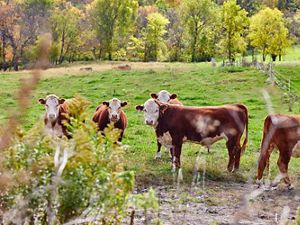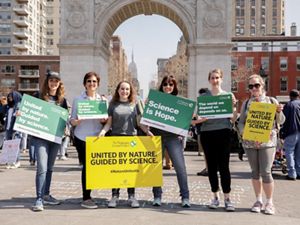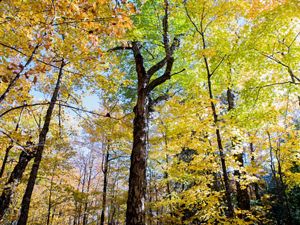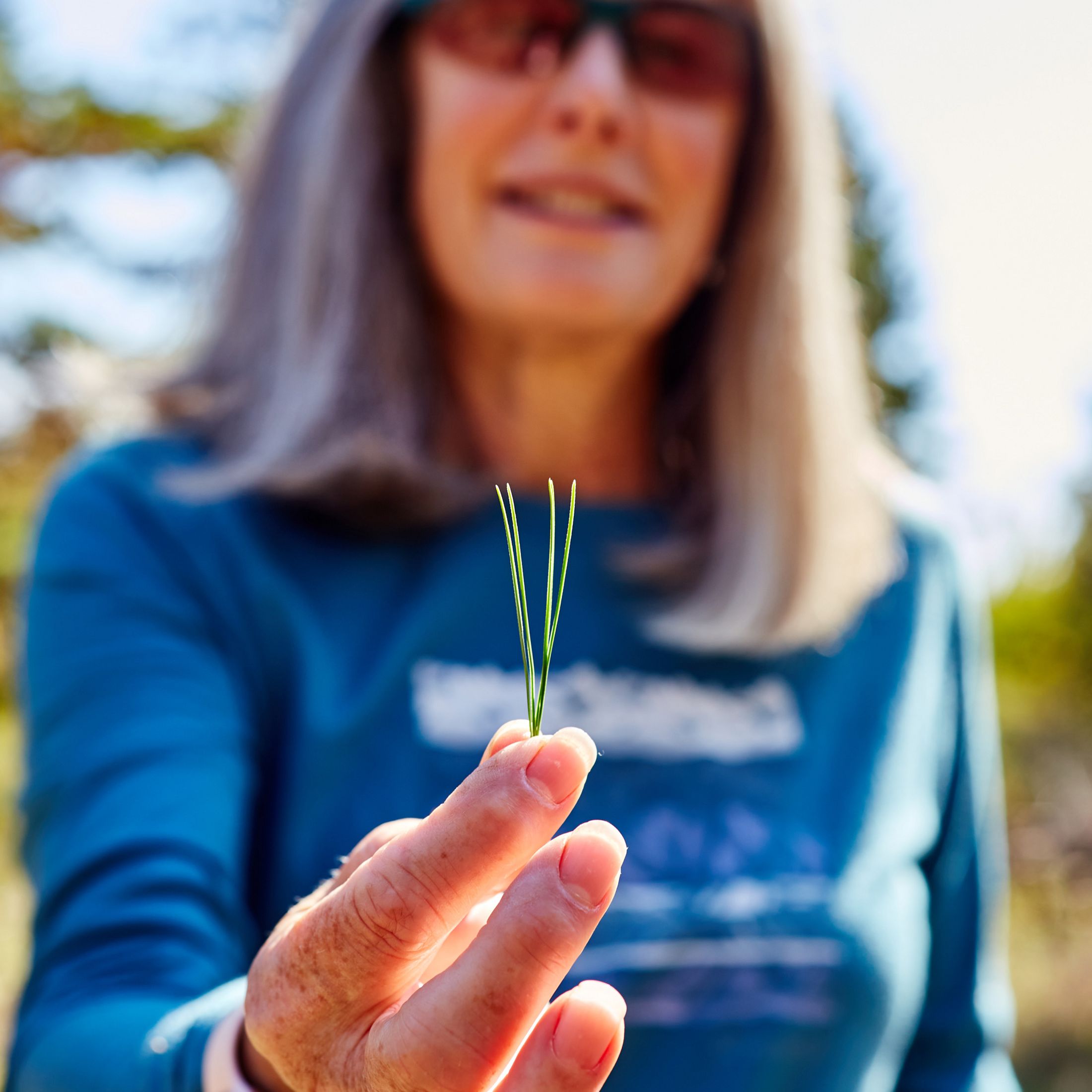
Advocate: Use Your Outside Voice!
Learn about conservation policy in Minnesota, plus how you can get involved by speaking up for nature.
Get started by exploring the guide below!
Our Charge
In Minnesota, we enjoy gifts like abundant freshwater, rich diversity of species and ecosystems and productive working lands. We also have a tremendous responsibility to respect and care for the nature that sustains us so that it may sustain future generations as well. That’s why we’re using our outside voices to speak up for nature with the Minnesota State Legislature—and we invite you to join us!
Quote: Ann Mulholland
Policy is one of the most effective tools we have for advancing biodiversity and climate solutions.

Using Policy to Advance Conservation
The Nature Conservancy in Minnesota advances policy solutions that work for people and nature. As with our conservation work, our policy priorities are directly informed by the best science available.
Science drives how we plan and implement conservation and informs our policy and public funding recommendations. Working alongside partners in business and industry, and people from all walks of life, including Indigenous communities, Native Nations and governments at the local, state and national levels, we take a collaborative approach to advancing conservation through policy.
We work across borders, aisles and sectors to conserve the lands and waters on which all life depends. Our nonpartisan approach, commitment to science and collaboration with local partners and colleagues around the state will help us realize our vision of a world where nature and people thrive together. But we can’t achieve that future alone. We need your help!
Get to know our policy priorities in Minnesota, learn how you can use your voice to make a difference and start speaking up for nature.
On the 2024 Agenda
-

Protect Healthy Land & Water
We’re facing dual threats from the climate crisis and extreme loss of the variety of life on earth, and we don’t stand a chance without clean water and healthy land.
-

Tackle Climate Change
Climate change isn’t a distant threat—it is happening now. The world saw its warmest year in recorded history in 2023, and Minnesota is feeling the effects.
-
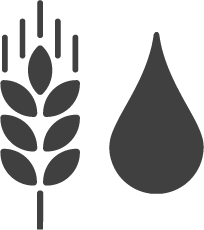
Provide Food & Water Sustainably
Food demand is expected to increase by more than 50% in the next 30 years. We can meet the challenge by working with farmers to improve soil health and farm productivity.
Protect Healthy Land & Water






The Nature Conservancy is helping to protect dedicated state investments in natural resources and we're working to increase state investments in natural resources through other funding sources.
TNC has long been in the business of protecting important natural areas, and this work has never been more vital. As Minnesota's climate changes, these places will become even more critical as wildlife come to increasingly rely on these natural highways and neighborhoods as they move away from climate threats. These places are also critically important because of the immense amounts of carbon that they can capture and store through natural regeneration.
Learn About Protection
-
Established in 1988 by the voters of Minnesota, the Environment and Natural Resources Trust Fund provides funding for the state’s air, water, land, fish and wildlife through revenue generated by the Minnesota State Lottery. Since the early 1990s, this fund has generated more than $900 million, funding more than 1,700 conservation projects across Minnesota. Some of Minnesotans’ favorite conservation programs, like Lawns to Legumes and the Voyageurs Wolf Project, rely on funding from the ENRTF. Last year, the state legislature passed a bill to give voters a chance to extend the fund’s constitutional dedication by voting to protect it in the 2024 election before it expires in 2025.
-
A lot of people are surprised to learn that nearly 2,800 of Minnesota's bodies of water are considered impaired by the Minnesota Pollution Control Agency. The Mississippi River headwaters area is one of special concern for The Nature Conservancy, as this region provides drinking water for about 2.5 million Minnesotans. We’re also working to improve the health of Lake Superior’s tributaries by planting millions of trees in coordination with conservation partners.
-
In 2008, voters in Minnesota passed the Clean Water, Land and Legacy Amendment, which continues to provide supplemental funding for clean water, healthy lands, parks and trails as well as the arts. Explore places we've protected using Outdoor Heritage funding through the Legacy Amendment.
-
Biodiversity underpins every aspect of life on our planet. The food we eat, the air we breathe, our climate—essentially, everything that makes Earth inhabitable—all depends on the interplay of millions of organisms in diverse ecosystems, which have learned to thrive and interact over billions of years. Learn more about biodiversity by watching this video.
Tackle Climate Change






Nature is our first line of defense against many climate impacts. That’s why we are working to create systems that store more carbon through natural processes and improve lives in the process. We’re working to incentivize public and private landowners to use practices that store more carbon, like planting trees, improving soil health on agricultural lands and protecting and restoring our grasslands, wetlands and peatlands.
The Nature Conservancy is also encouraging state leaders to enable greater resiliency through nature-based adaptation. These are practices that will prepare nature for climate change, as well as buffer communities from the worst floods, droughts and other climate impacts.
More on Climate Change in MN
-
Climate change is already having an enormous impact on our waters, lands, wildlife and people. It's showing up in the form of droughts and dying trees, extreme weather and flooding events and the compounded effects of both in far too many Minnesota waterways. Read more about climate change in Minnesota.
-
Natural climate solutions are conservation, restoration and improved land management actions that increase carbon storage, avoid greenhouse gas emissions and help nature and people adapt to climate change. Combined with clean energy and other decarbonization efforts, natural climate solutions offer some of our best options to respond to climate change.
-
Nature can provide up to a third of the solution to global climate change. It's inexpensive, scalable and available to us now. But perhaps most importantly, it's an essential part of our climate response. We will not be able to meet global climate targets without nature, which is why we need to start investing in nature-based solutions now. Learn more about nature-based solutions by watching this video.
-
Reforestation, restoring wetlands and planting cover crops are just a few of the ways Minnesotans can help draw down carbon emissions through nature. Our farms, forests, grasslands and other landscapes can help mitigate as much as 26 million metric tons of CO2e. In addition to natural climate solutions, nature-based adaptation strategies like building rain gardens and planting trees where people live can also improve the resilience and quality of life for communities living near climate threats. Read more in this report.
-
In order to effectively tackle climate change in Minnesota, we need an all-of-the-above strategy. Eliminating our dependence on fossil fuels and moving toward renewable energy sources is an essential step. It’s also not enough on its own. We need to draw down existing carbon in the atmosphere to reach net-zero emissions by 2050, and nature can help us get there. Through photosynthesis, actions as simple as planting more trees can help us reduce carbon in the atmosphere and start taking climate action now.






Farming is a proud Minnesota tradition, and it’s important that we protect farm productivity and retain our state’s leadership within the industry. When making investments in our ag economy, it is critical to maximize benefits to society like protecting our air, water and soil, as well as our communities and the health of the people who live here.
We work with state government agencies to develop innovative programs that will improve impaired waters and prevent further degradation, as well as make sure farmers have the resources they need to implement solutions.
Increased soil health improves productivity, water quality, biodiversity, carbon storage and public health outcomes. But many farmers experience financial and technical barriers to implementing these practices. We need lawmakers' help to drive incentives that will improve soil health on agricultural lands and support Minnesota farmers who are doing right by nature.
ABOUT REGENERATIVE AGRICULTURE
-
About half of Minnesota's lands are currently in agricultural production, and most are not managed with practices that regenerate the health of the soil. That means an outsized risk of erosion and runoff to Minnesota's waters, as well as greenhouse gas emissions due to carbon released from the soil. But this also presents an opportunity to leverage agricultural landscapes to work better with nature's systems. Learn more about regenerative agriculture in Minnesota.
-
Practices that sequester carbon, increase organic matter and ultimately improve the biological, physical and chemical function of the soil are generally referred to as soil health practices. These include cover crops, reduced tillage, diversified crop rotation, improved nutrient management and edge-of-field strategies that help farms more efficiently hold water and carbon.
-
Agencies like the Board of Water and Soil Resources, Natural Resources Conservation Service and local soil and water conservation districts (SWCDs) all support farmers and ranchers who want to make their operations more sustainable. The emergence of carbon markets and other ecosystem service markets can also help farmers by compensating them for their investments in nature. But for these strategies to be scalable, we must ensure they receive adequate and stable funding.
-
Food production has altered our planet more than any other human activity. It accounts for a quarter of greenhouse gas emissions and 70% of all freshwater usage. And it is perhaps the single greatest cause of biodiversity loss. But it also provides livelihoods for more than a third of the world’s population. A regenerative food system takes us beyond mere sustainability toward positive growth that benefits our planet and the billions of farmers, fishers, ranchers and others who work to provide our food—without harming the health and livelihoods of rural communities and communities of color. Learn more about regenerative agriculture by watching this video.
Be a Voice for Nature!
Sign up to receive action alerts from TNC in Minnesota so you can stay in the know about issues you care about. We’ll send you timely alerts about what’s happening at the Capitol and how you can speak up for nature!
